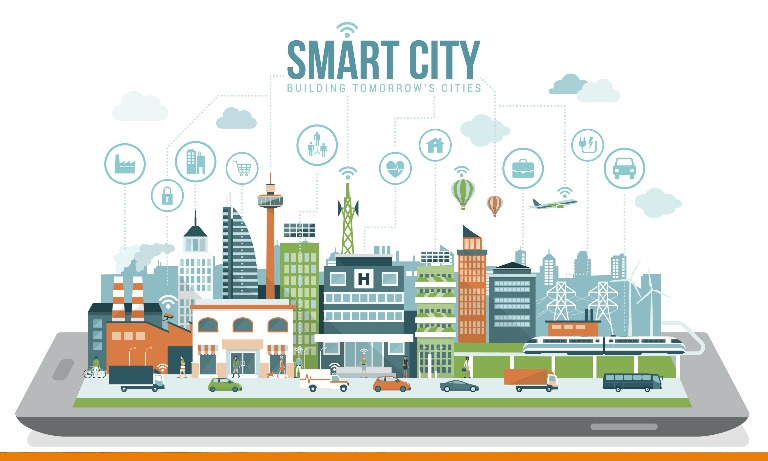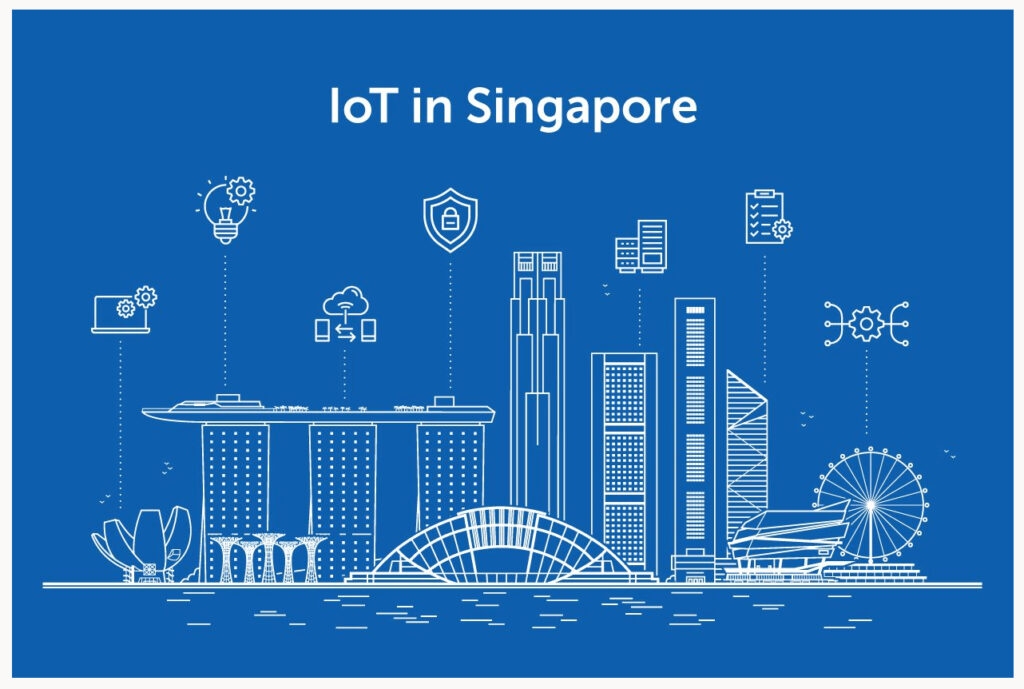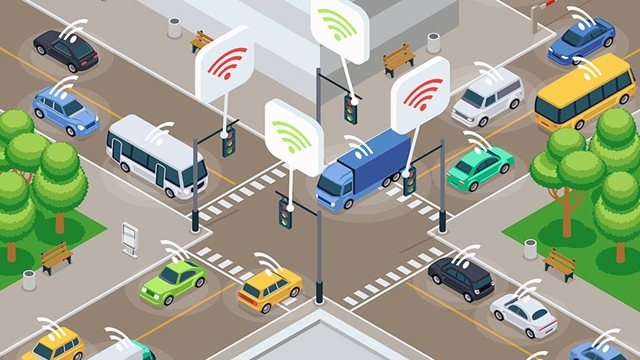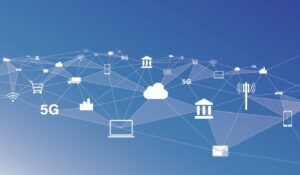Highlights
- The Internet of Things (IoT) is transforming smart cities by providing real-time data and insights, improving efficiency, sustainability, and quality of life.
- The advantages of IoT in smart cities include increased resource efficiency, reduced environmental impact, and enhanced quality of life for residents.
- Challenges in implementing IoT in smart cities involve data security, privacy protection, and interoperability issues, which need to be addressed for successful deployment.

The Internet of Things (IoT) has emerged as a vital factor in altering urban environments in this fast-evolving technological era.
This article delves into how networked technologies, data-driven insights, and seamless automation are together transforming the way we live, work, and interact in cities.
Let’s discuss how IoT technologies may help improve efficiency, sustainability, and general quality of life in modern cities.
The Role of the Internet of Things (IoT) in Modern Cities
The Internet of Things (IoT) is a vast network of common objects, such as appliances and devices, that contain unique features, such as sensors and internet connectivity.
These products may gather and share information with one another. The Internet of Things is changing the way we live, work, and play.
IoT is being utilized in smart cities to help things operate more smoothly, better use resources, and improve people’s lives. Let’s dig into it.
What is a Smart City?

A smart city is a city that uses information and communication technology (ICT) to improve the operation of numerous services and facilities, thereby benefiting its residents.
Smart cities acquire and analyze data from a variety of sources, including sensors, various devices, and even residents, by combining a variety of cutting-edge technologies such as the Internet of Things (IoT), big data, and artificial intelligence (AI).
This plethora of data helps municipal officials to make informed and sensible resource management decisions, such as optimizing energy use, water usage, and transportation systems.
The major purpose is to increase efficiency, decrease environmental impact, and improve the general quality of life for city dwellers.
What Role Does IoT Play in Smart Cities?
The Internet of Things (IoT) is critical in increasing a wide range of urban services in the context of smart cities. Real-time data may be collected and analyzed by strategically putting IoT sensors around the city, resulting in major advances in a variety of areas.
- Energy Management: Energy management is one area where IoT has had a significant influence. Cities may monitor energy use in real-time with IoT devices. This information may be used to identify energy-saving options, such as shutting off lights in empty rooms or altering temperatures based on occupancy levels. Cities may make significant progress toward sustainability and cost-efficiency by managing energy consumption.
- Water Management: Another sector changed by IoT technology is water management. Cities can monitor water consumption in real-time with IoT devices, detecting possible leaks and inefficiencies. This real-time data allows for better water distribution, saving resources, and reducing waste.
- Waste Management: Cities may improve garbage collection routes based on real-time data by using IoT sensors to monitor waste levels in bins. By reducing needless travel and emissions, this simplified method increases efficiency and decreases environmental impact.
- Transportation: The Internet of Things has an impact on transportation as well, with sensors offering important data about traffic flow. Cities may provide up-to-date information to drivers by evaluating real-time data on traffic conditions, assisting them in making wiser travel decisions and minimizing congestion. As a result, emissions are reduced, resulting in a greener urban environment.
- Public Safety: Furthermore, IoT makes a substantial contribution to public safety. Cities may monitor crime rates in real time using IoT devices and quickly send this information to law enforcement organizations. This data-driven strategy enables authorities to respond to occurrences more effectively, improving overall public safety and crime prevention efforts.
So, based on the examples above, we can infer that integrating IoT in smart cities transforms urban services by giving important real-time data and insights.
IoT improves efficiency, sustainability, and the overall quality of life for city people by improving everything from energy and water management to transportation, public safety, and trash management.
The Advantages of IoT in Smart Cities
Using the Internet of Things (IoT) in the context of smart cities provides a plethora of benefits, altering the way urban centers operate.
- Improved Efficiency: One significant advantage is increased efficiency since IoT allows for real-time data collection and insights that optimize different urban services. This, in turn, results in significant reductions in energy use, water consumption, and trash disposal, simplifying resource management and making cities more sustainable.
- Reduced Environmental Impact: Furthermore, the incorporation of IoT into smart cities has a good influence on the environment. IoT helps to reduce metropolitan areas’ overall environmental impact by allowing increased energy efficiency and smarter waste management techniques. These developments are consistent with the global aim of more sustainable living and pave the way for greener, more environmentally friendly communities.
- Enhanced Quality of Life: IoT improves individuals’ quality of life by providing them with improved information and services. IoT, for example, may provide important insights into traffic patterns through real-time monitoring and data analysis, allowing for the supply of up-to-date traffic statistics. As a consequence, commuters may make more informed judgments about their routes, save time, and navigate the city more easily, resulting in less congestion and smoother traffic flow.
As a result, incorporating IoT into smart cities provides a slew of advantages, ranging from increased resource efficiency to decreased environmental impact and enhanced quality of life for city people.
This disruptive technology will be critical in defining tomorrow’s cities and generating a more sustainable and integrated urban landscape.
The Challenges of IoT in Smart Cities
The use of Internet of Things (IoT) technology in smart cities provides various benefits, but it also introduces a number of difficulties that must be solved for its successful deployment.
- Data Security: It is one of the key issues. Given the vast volume of data created by IoT devices, it is critical that this data is protected from any intrusions. If left unsecured, this vital information might get into the hands of hackers, perhaps leading to crimes or disrupting key city services.
- Privacy Protection: IoT devices are built to capture massive volumes of data on people, their habits, and preferences. It is critical to preserve this data and prevent any unlawful tracking or monitoring without specific authorization in order to uphold ethical standards and respect individuals’ rights.
- Interoperability: This issue occurs when merging numerous IoT devices from various suppliers into a unified smart city infrastructure. Device incompatibility may impede seamless communication and cooperation, making it difficult to develop comprehensive and effective smart city solutions. Addressing interoperability issues is critical for developing an integrated and efficient urban environment that fully utilizes IoT technology.
While IoT technology has the potential to transform smart cities, maintaining data security, privacy protection, and interoperability are essential to overcoming the implementation barriers.
Smart cities can leverage the full potential of IoT by proactively addressing these concerns, producing sustainable and efficient solutions for the enhancement of urban life.
Real World Examples
Singapore: I always admired the potential that Singapore has; it is a prominent smart city that uses IoT to improve urban living.

The city effectively monitors traffic conditions, optimizes energy usage, and handles garbage disposal using IoT-powered technologies, leading to a more sustainable and well-organized environment.
Furthermore, Singapore is at the vanguard of constructing a “smart grid” that promises to cut energy usage while increasing dependability, a critical step toward making the city greener and more resilient.
London: The kingdom of British, is also using IoT to modernize its urban infrastructure and handle typical metropolitan issues.

London successfully analyzes traffic patterns, measures air quality, and regulates water consumption using IoT-driven technology to ensure resource efficiency and a healthy living environment.
The city’s unique “smart parking” system demonstrates the city’s dedication to decreasing traffic and simplifying parking for residents and visitors alike, fostering smoother mobility and lowering wasteful emissions.
NYC: Across the Atlantic, New York City has used IoT to emphasize public safety.

The city actively analyzes crime rates, follows missing people, and provides real-time data to law enforcement using IoT apps, resulting in greater security and faster reaction times.
In addition, New York City is working to create a complete “smart city dashboard” that would give municipal authorities up-to-date and accurate information on the city’s infrastructure and services.
This dashboard will facilitate efficient decision-making and allow the city to handle possible difficulties proactively, thereby improving overall municipal government and citizen well-being.
Wrapping It All
In conclusion, the Internet of Things (IoT) is progressively impacting the growth of smart cities by changing urban services, expanding sustainability efforts, and improving people’s well-being.
Despite its many advantages, implementing IoT in smart cities offers considerable data security and privacy hurdles.
As we expand IoT in urban areas, it becomes more important to solve these challenges to secure a safer and more prosperous future for our smart cities and their residents.
Further Reading:
Directly in Your Inbox









